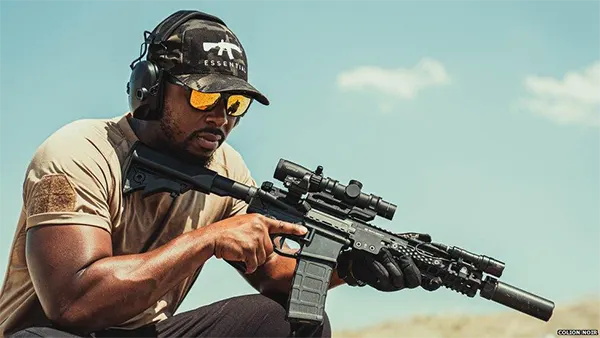
KEY TAKEAWAYS
- Understand what makes the AR-15 different from a regular weapon
- Learn how you can, part by part, build a strong and customized AR-15
- Discover accessories and parts that can improve your performance
Did you know that in 2021, around 360 shooters participated in the Olympics? The skills of shooters are improving, and so are their weapons.
One thing you can’t deny here, your weapon can be a deciding factor in whether you will celebrate your victory or go home with a sad, defeated face after a competition.
In competitions like 3-Gun, PRS Gas Gun, or NRA High Power competitions, you have to have weapons that take you from zero to hero, and one such weapon is the AR-15.
The AR-15 is very famous for its precision and versatility. In this article, we will guide you through everything you need to know to build an AR-15 for top competition performance.
Before you start building, it is important to know what makes a competition AR-15 different from a regular weapon. A good competition AR-15 focuses on:
Lightweight parts for quick aim change.
Precision barrels for hitting targets.
Match grade triggers for quick shooting.
Comfortable design for long use in practice or competition.
Now, let’s learn about each part so that you will be able to know the build of the AR-15.
The lower receiver is the main part of the gun and is where you start. For competitive shooting:
Your upper receiver should be as good as your lower. Checks for tight fits and features that stop rotation. For the barrel:
Add a low-profile gas block and mid-length gas system to help with recoil and reliability.
Free-floating handguards let the barrels move freely, which helps with accuracy. Look for:
Adding a bipod and handstop can help with stability.
A good BCG helps your refile work smoothly. Key features include:
A reliable BCG can greatly affect your shooting performance.
Not all ammo works the same. To get the best performance:
Once your AR-15 is ready, it’s time to practice:
Doing dry fire drills at home can also help improve your performance.
Once you complete the whole building process, you will realize that when you take time to build your own AR-15 rifle, you are not just making a rifle; you are making a shooting tool that perfectly suits your personal needs.
With the right parts, care, and practice, you can take yourself from beginner to expert, from zero to hero.
An extended or ambidextrous charging handle makes it easier to use, and a muzzle device reduces recoiling and minimizes upward muzzle rise.
It costs anywhere between $1,700 – $4,300+ if you customize it.
Follow some easy steps like cleaning it after each match, checking for wear on parts, changing springs regularly, and keeping a log of maintenance and rounds fired.
You can use angled foregrips, bigger mag releases, bolt catches, and durable trigger pins.
